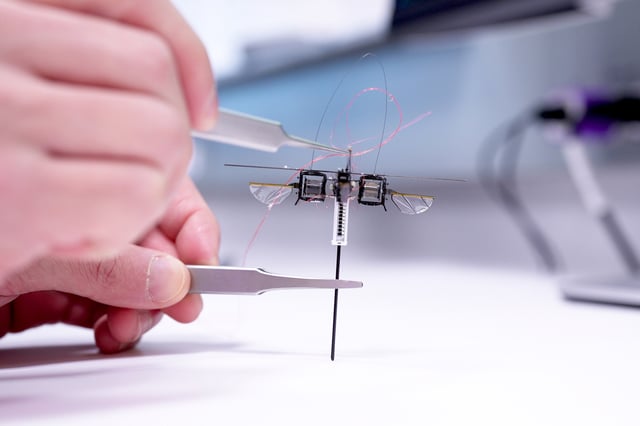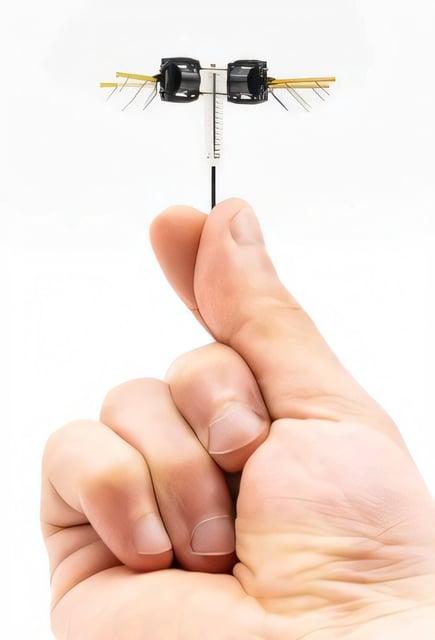Overview
- The miniature robot uses a hybrid locomotion system combining a spring-based elastic leg and flapping-wing modules to achieve efficient and agile movement.
- It consumes 60% less energy than comparable aerial robots while navigating diverse terrains such as ice, grass, and uneven surfaces.
- Weighing less than a paperclip, the robot can carry payloads up to 10 times its weight, enabling the integration of batteries, sensors, and circuits for future autonomy.
- The robot's control system employs motion tracking and algorithms to adjust its trajectory and orientation mid-flight, ensuring stability and precision.
- Researchers are focusing on integrating autonomous functionality for deployment in real-world scenarios, such as search and rescue in confined or hazardous environments.

